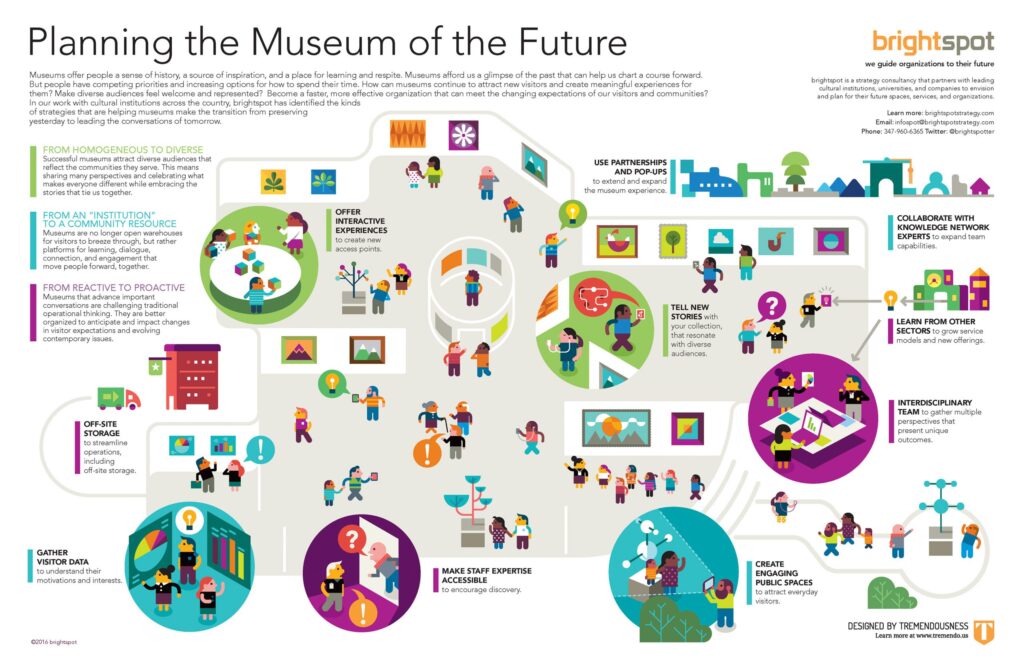How do I operationalize a visual-first strategy? (part 3)
Part 3 of 3
First, a recap. In part 1 we talked about the WHYs of adopting a visual-first strategy. In part 2 we looked at WHO benefits, and in what ways. In the final installment, we’re go into the HOW — it’s time to start making getting real.
“visual-first strategy”
noun | /ˈviZH(o͞o)əl fɜrst ˈstradəjē/
Definition
An approach to organizational strategy and communications that prioritizes visual thinking, storytelling, and communication to clarify complex ideas, align teams, accelerate understanding, and drive action.
A visual-first strategy uses tools such as diagrams, models, interactive, live sketching, infographics, and motion graphics not as decoration, but as essential vehicles for decision-making, alignment, and shared insights.
Example usage
“To get everyone on board, we mapped the transformation plan using a visual-first strategy. Now that different teams can actually see how they fit in — and understand the goals and what’s expected — we’re already seeing the benefits. It literally puts everyone on the same page.”
The example here outlines a museum’s strategy to stay relevant in the future. It’s not the entire plan; it’s an overview that shows how things will change and improve. Color coding classifies types of change an the main visual feature multiple vignettes that bring specific concepts to life (each of these can be its own drill-down so you can clarify the vision in the context of different teams).
No one needs to imagine what the future looks like… now they can see it.

Key benefits
- Make abstract ideas tangible
- Reveal gaps, assumptions, and misalignment early
- Create a shared mental model across diverse stakeholders
- Improve comprehension, retention, and engagement
- Scale and socialize comms better than text alone, especially in complex environments
Related ideas
- Visual Communication (broader) — The use of images, diagrams, design, and motion to convey meaning quickly and clearly.
- Information Design (narrower) — The practice of structuring and presenting information for clarity, efficiency, and usability.
- Design Thinking (adjacent) — A human-centered, iterative approach to problem-solving that emphasizes empathy, prototyping, and testing.
- Systems Thinking (foundational) — An approach that focuses on how parts of a system interrelate within the whole.
- Mental Models (underlying) — Internal representations people use to understand the world and make decisions.
- Knowledge Management (supportive)— The systems and practices that help organizations capture, share, and apply knowledge.
- Traditional Comms (less engaging) — Pushes information at people instead of pulling them in — hard to remember, easy to ignore, and rarely inspiring.
Visual-first strategies create stability in motion.
Moving from alignment in the room to action in the org
It’s one thing to develop a smart, visually compelling strategy. It’s another to make it stick.
In today’s whirlwind of reorganizations, downsizing, inflation pressures, tech disruption, and back-to-the-office battles, most teams aren’t lacking in ambition. What they’re missing is clarity — especially at scale. People are being asked to do more with less, move faster than ever, and change how they work without fully understanding why. That’s where visual strategy becomes a powerful — and underutilized — advantage.
A visual strategy isn’t just a nice-to-have artifact from a successful offsite. When used well, it becomes a shared mental model — something everyone can point to, interpret together, and use to make faster, more confident decisions. It creates stability in motion.
We’ve seen this firsthand. After helping a global biotech client clarify its innovation strategy, the co-created visual model showed up everywhere: kickoff meetings, onboarding decks, posters outside conference rooms, digital whiteboards, SharePoint pages, even as a backdrop in town halls. It became a kind of visual operating system — the reference point people used to prioritize, explain tradeoffs, and align across silos. Wayfinding for the future.
That’s the first tangible step towards ROI: Not just understanding the strategy — but using it.
A visual strategy is wayfinding for the future.
Six practical tips to make it stick
- Put it where the work happens — Slide decks get buried in emails and intranets. So in addition, print and hang visual explanations in team spaces, embed diagrams in planning tools, or turn the journey into a clickable Miro board or a pinned Slack. Your strategy should live alongside the decisions it’s meant to guide.
- Include it in rituals — Start team meetings with a quick “Where are we in the strategy?” check-in. Use the visual story as a backdrop for quarterly planning. Think of it as a “You Are Here” map for the vision. The more people see it, the more they internalize it.
- Build a language around it — Good visual strategy creates new shorthand. We’ve seen clients refer to “moving from zone 2 to zone 3” or “bending the curve” based on simple visuals. This novel internal vocabulary builds cultural traction — fast.
- Don’t expect one version to work for all — Tailor the story. Executives might need a high-level narrative while frontline teams want more tactical overlays. Build flexibility into your visual assets: the same core idea, shown at different levels of detail depending on the audience.
- Treat it as a living asset — Markets change. Priorities evolve. Your strategy visual shouldn’t get locked in amber. Revisit it quarterly or annually. Annotate it. Update it. That keeps it relevant, respected, and reusable.
- Bake it into onboarding — Give new hires a map on day one. Help them see where they fit. It’s one of the fastest ways to connect people to purpose and accelerate contribution.
A visual strategy won’t be successful simply because people see it — it’ll be successful because people use it, because they can see themselves in the change story. Every time someone references it to make a decision — whether it’s to set direction or explain the WHAT, WHY, WHEN, and HOW — you’re getting value from it.
If your strategy matters, make it visible. And if it’s already visible — make it actionable.
Part of a series
- Previously — Part 1/3: Why adopt a visual-first strategy?
- Previously — Part 2/3: Who benefits from a visual-first strategy?
- This piece — Part 3/3: How do I operationalize a visual-first strategy?
